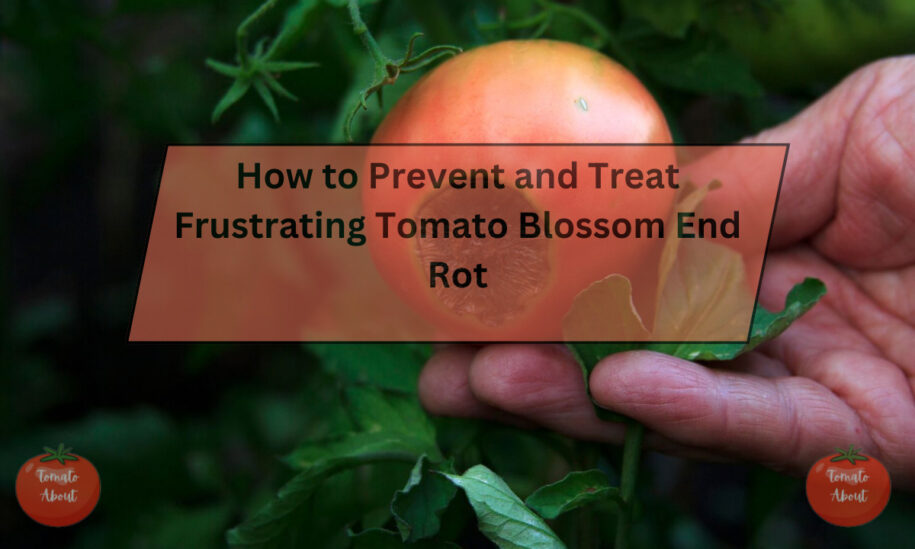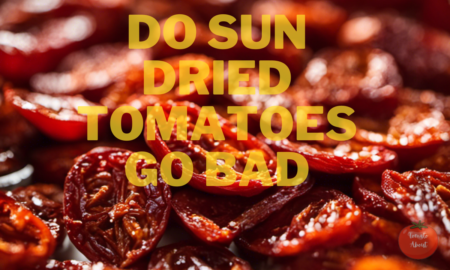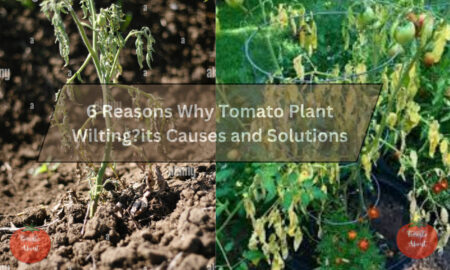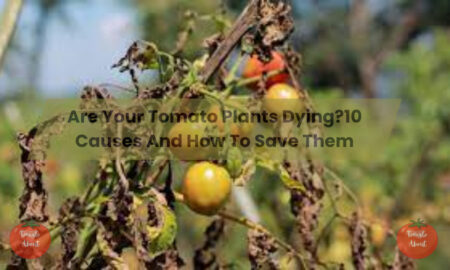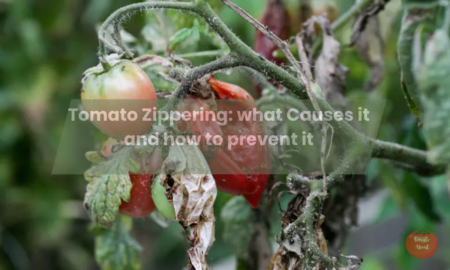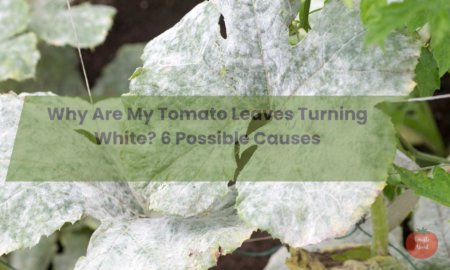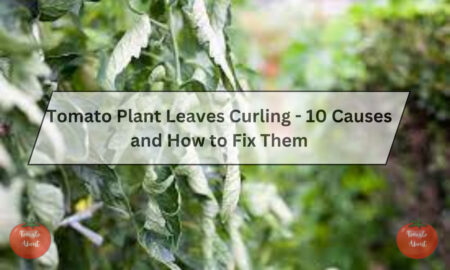Nothing is more disheartening for a home gardener than walking out to the vegetable patch and noticing tell-tale dark, sunken spots on the bottom of ripening tomatoes. After patiently tending the plants for months, blossom end rot rears its ugly head, ruining fruits before they have a chance to reach their full flavor potential.
But don’t despair. While blossom end rot is irritating, it’s not a death sentence for your tomato crop. Armed with some knowledge of what causes this physiological disorder, along with preventive care and treatment, you can still harvest bushels of beautiful, delicious tomatoes this season.
What Causes Blossom End Rot in Tomatoes?
Blossom end rot is not caused by an infectious pathogen or pest. Rather, it’s the result of a calcium deficiency in the fruit during development brought on by irregular watering practices.
Calcium is essential for the proper formation of plant cell walls. It is absorbed by roots from the soil and transported up to actively growing parts of the plant. Tomatoes need a continual supply of water to facilitate this calcium transport. When soil moisture fluctuates between very wet and very dry, calcium can’t efficiently move from roots to fruits.
Fruits are especially vulnerable because they have high calcium requirements during rapid growth. As the plant shuttles calcium from the roots to the leaves, stems, and developing tomatoes, the fruits at the ends of branches often get short-changed when soil moisture is inconsistent. Without adequate calcium, cells collapse, resulting in sunken, discolored lesions of blossom end rot.
When Does Blossom End Rot Occur?
Calcium is essential for structural integrity and growth in developing tomato fruits. When anything interferes with the roots absorbing sufficient calcium from the soil, the plant cannot deliver adequate calcium to fruits as they form. This calcium deficiency causes cells to weaken, collapse, and die in the blossom end, leaving sunken, dead tissue.
Common triggers leading to blossom end rot include:
- Erratic soil moisture from inadequate or improper watering
- Root damage from transplantation, cultivating, or nematodes
- Overfertilization with nitrogen-rich formulas
- Compacted or calcium-deficient soil
- Cold soil temperatures slow growth
While a shortage of calcium ultimately causes the rot, adding more calcium does not reverse existing damage, as the dead cells cannot revive. However, optimizing moisture, temperature, and nutrition can prevent future occurrences.
How to Manage Existing Blossom End Rot
Unfortunately, there is no cure for existing blossom end rot. The damaged tissue will not heal or improve. However, you can take these steps to salvage affected fruit:
- Remove severely affected tomatoes to prevent the spread of secondary fungi and bacteria. Compost them.
- Harvest mildly affected tomatoes promptly. Rot rapidly worsens if fruit stays on the vine.
- Trim off the damaged portion and enjoy the rest of the tomato raw. Flavor is generally not impacted.
- Refrain from canning or preserving affected tomatoes, as the damage can compromise results. Use for fresh eating only.
- Assess soil moisture and fertilizer practices to pinpoint causes and prevent future blossom end rot.
4 Ways to Prevent Tomato Blossom End Rot
While you can’t eliminate blossom end rot completely, you can take steps to significantly reduce its occurrence and save your tomato harvest.
1. Water Tomatoes Regularly
Inconsistent watering is the number one cause of blossom end rot. Tomato plants thrive with about 1-2 inches of water per week from rain or irrigation. Make sure plants receive thorough, even watering. Drip irrigation and soaker hoses are ideal for delivering water right to the roots.
When watering by hand, avoid just sprinkling the soil surface. Really drench the entire root zone to a depth of at least 6 inches. erratic surface watering encourages shallow roots that can dry out rapidly. Deep irrigation promotes healthier root systems that can access moisture and nutrients from a larger volume of soil.
Pay close attention to water needs if growing tomatoes in containers. The limited soil volume dries out more quickly than in-ground beds. Check soil moisture frequently. Don’t wait for plants to wilt before watering thoroughly.
2. Mulch Beds to Conserve Moisture
Spread 2-3 inches of organic mulch like shredded leaves, straw, or compost around plants to help the soil retain moisture longer. Mulching also smothers weeds that compete for water. Replenish the mulch layer as needed throughout the season.
3. Go Easy on Fertilizer
Heavy fertilization fuels rapid growth that can outpace the ability of roots to supply calcium. Avoid overstimulating plants with excessive nitrogen.
Before planting, mix 1-2 inches of compost into beds to naturally enrich the soil. Only apply additional commercial fertilizer based on soil test recommendations. Always follow label directions carefully.
4. Protect Roots from Damage
Healthy, robust roots maximize calcium uptake. Avoid digging around plants once they’re established. Keep the area weed-free by applying mulch instead of cultivating. Prevent soil compaction from foot traffic, which restricts root growth and function.
Blossom End Rot Treatment Options
If those preventive measures fail and blossom end rot strikes, don’t despair. While affected fruits likely can’t be saved, you can take steps to halt damage to developing tomatoes so the rest of your crop remains bountiful and delicious.
Remove Damaged Fruit
Pick off all tomatoes exhibiting rot at the blossom end. Removing symptomatic fruits prevents the fungus from spreading to healthy tomatoes. Discard diseased tomatoes in the trash or hot compost pile rather than leaving them on the ground.
Improve Soil Calcium
Maximize calcium availability with one or both of these methods:
- Work finely ground eggshells into the soil around plants. Eggshells are a slow-release source of calcium.
- Mix 1 tablespoon Epsom salts (magnesium sulfate) per gallon of water. Pour this solution on the soil around plants every 1-2 weeks. Magnesium promotes calcium uptake.
Maintain Consistent Soil Moisture
This is the most critical step! Calcium can only reach developing fruits via water flowing from the roots. Prioritize regular, deep watering to establish evenly moist soil. Drip irrigation is ideal for maintaining optimal moisture levels.
When to Harvest Tomatoes with Blossom End Rot
You don’t have to wait until tomatoes are fully ripe on the vine to pick and enjoy fruits affected by blossom end rot. The calcium deficiency only damages a small area on the bottom of the fruit.
The rest of the tomato will be perfectly fine to eat. Pick tomatoes showing dry, sunken brown spots as soon as they reach full size. Take them inside and store at room temperature out of direct sunlight.
Simply trim off the damaged blossom end before slicing the tomato. The remaining flesh will be nice and firm with great flavor. While not picture-perfect, these tomatoes are still delicious for sandwiches, sauces, salsas, and other cooking projects.
Tomatoes Already Have Blossom End Rot. What Should I Do?
If despite your best efforts, some of your tomatoes still develop blossom end rot, here are some tips:
- Remove and discard severely affected fruit to prevent the rot from spreading.
- Harvest tomatoes with minor rot promptly. The damage worsens if left on the vine.
- Cut away the damaged portion and enjoy the rest of the tomato. Flavor is generally not affected.
- Avoid canning or preserving tomatoes with rot. Use them for fresh eating only.
- Assess your watering habits and soil conditions and make adjustments to prevent more issues.
- Be diligent about watering consistently, mulching, and providing calcium through sprays or amendments.
- Don’t get discouraged! Even experienced gardeners battle blossom end rot. Focus on growing strong healthy plants.
Frequently Asked Questions
Q: Why do my cherry tomatoes get blossom end rot but not my large slicing tomatoes?
A: Cherry and grape tomatoes often escape blossom end rot while large tomatoes are heavily affected. The compact size and quicker growth rate of small tomatoes allow them to receive ample calcium before deficiencies occur. Meanwhile, large slicing types grow rapidly over a longer period, increasing their chances of inadequate calcium.
Q: Can blossom end rot spread from affected tomatoes to healthy tomatoes nearby?
A: No, blossom end rot cannot spread between tomato fruits. However, the fungal and bacterial rots that may colonize damaged tissue can spread to healthy tomatoes through contact or shared garden tools. Promptly removing severely affected tomatoes prevents transmission of secondary rots.
Q: If my tomato leaves are turning yellow, could a nutrient deficiency also be causing blossom end rot?
A: Yes, yellowing leaves can indicate a magnesium, potassium, or nitrogen deficiency which could contribute to blossom end rot. Ensure tomatoes receive a balanced fertilizer with macronutrients and micronutrients to maintain optimal health and calcium distribution.
Wrapping up!
While blossom end rot may never be completely avoidable, you can manage your tomato crop in ways that limit its impact. Pay close attention to soil moisture, mulch properly, choose resistant varieties, and monitor calcium levels. With smart preventative care, you can still harvest bushels of gorgeous, delicious tomatoes. Don’t let blossom end rot ruin your tomato glory!

